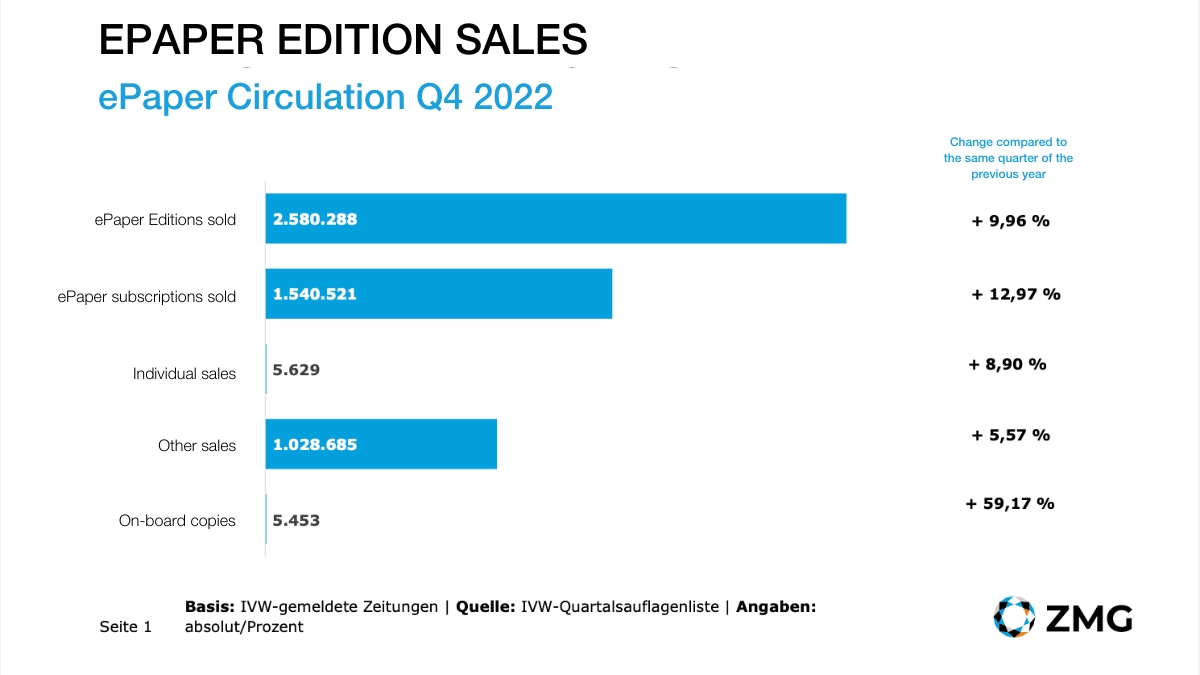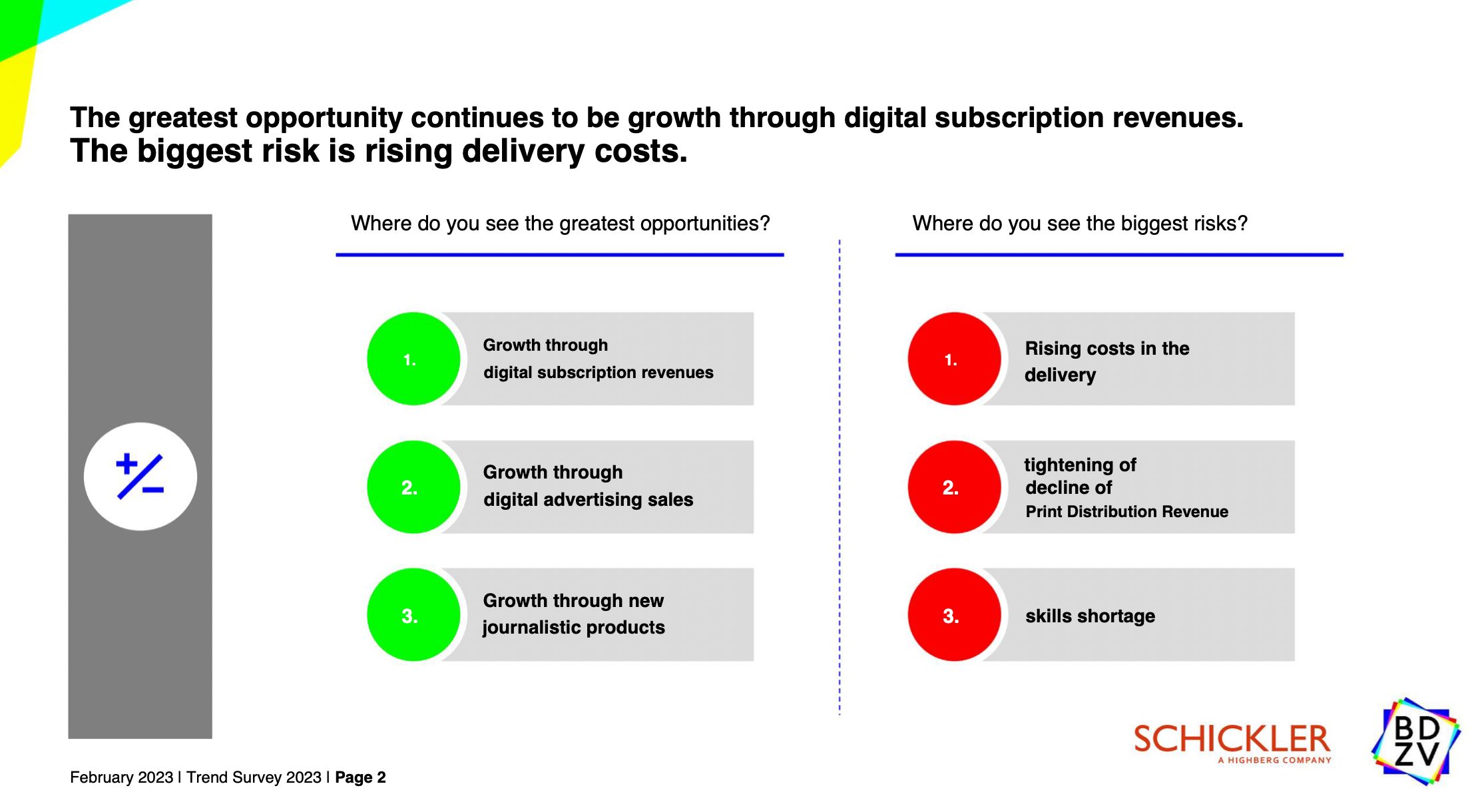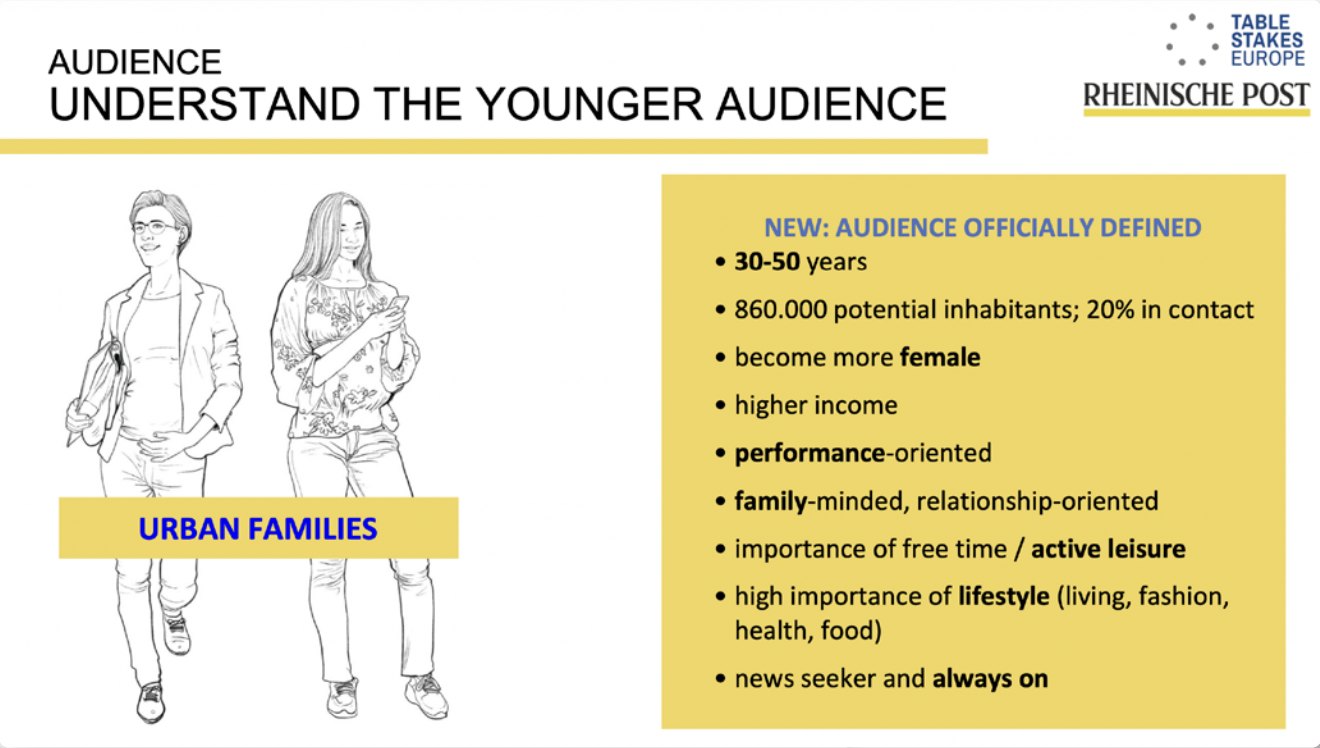Blog
How German publishers are successfully converting subscribers from print to digital
Germany continues to be a leader in digital news consumption. In their latest report launched this week, BDZV and Schickler revealed that 75% of publishers are pursuing strategies to convert print subscribers to the ePaper whilst 93% of publishers see the importance of ePapers as having grown compared to previous years. We dive into the numbers and some standout cases of why the ePaper continues to grow in Germany, and provide some practical tips to take to your market.
Digital consumption up 88% with 14-29 year olds
The latest data from ZMG found that 56.3 million Germans read the newspaper each week, just under 80% of the German population. Of these news readers, more people consume their news in digital than print. 56.7% choose to read the digital newspaper, with 54.1% choosing print. This newsreading habit is reflected in younger age groups. 67.1% of 14-29 year olds consume news in either print or digital a week in Germany. Of these 9.4 million readers, print reaches 5 million whilst the net reach of print and digital in 9.4 million. This represents an 88% net increase.

Central to digital news consumption in Germany has been strong ePaper growth. IVW discovered that ePaper edition sales increased by 9.96% to over 2.5 million in Q4 2022. ePaper subscriptions also grew by 12.97% to 1.5 million. Subscriptions were the dominant ePaper sales drivers across all different types of publisher in Germany in Q4. Local and regional newspapers saw subscriptions make up 60% of their growth. This figure increased to 63% for multi-regional newspapers and Sunday newspapers, with weeklies seeing the largest proportions of subscriptions at 76%.

Digital subscription growth continues to be the place where German publishers see their greatest growth potential. This is in line with trends identified by Reuters 2023 Predictions and no surprise with German publishers identifying rising delivery costs and tightening of the decline of print distribution revenue as their biggest risks for 2023.

Growth through new journalistic products is identified as the third opportunity for publishers from Germany. Strong product experiences have been central to this ePaper growth and ensuring that digital products are easy to use and offer flawless experiences is central to smooth reader transitions.
Aachener Zeitung guiding readers through the transition to ePaper
Regional publisher Aachener Zeitung recently launched their latest app on the Twipe platform to offer their users a new app experience. Modularity has been central to the regional publisher’s ePaper app. Their new app features the day’s ePaper, a live news module and in-app puzzles. The app also features regional selection so subscribers can switch to get specialised local content and early access for subscribers to the next day’s edition, features BDZV and Schickler identified as central to successful reader conversion. To make this transition from print to digital and from the old app to the new app as smooth as possible, Aachener Zeitung provided a guide for their readers.

Adverts were displayed on the Aachener Zeitung website to inform readers about the migration with a web page guiding readers through the process of setting up the new app and its updated features. Print and ePaper subscribers were also informed through an advert on the front page of the edition on the day of the launch. A full guide was featured inside the edition to guide readers through the new app. Being with the subscriber at each step of the transition helps to make sure it is as seamless and causes as little disruption as possible. This is particularly important as ePaper readers are traditionally more habitual therefore disrupting their experience can be a risky and detrimental move.
Rheinische post focusing on micro-audiences
In Germany, efforts have also been made to get specific more groups engaged with digital news products through experiments. As part of the WAN-IFRA Table Stakes Europe Project, German regional publisher Rheinische Post wanted to transfer the impact, trust and loyalty seen in their print products to their digital offering. They started on a micro-audience level targeting niche groups with tailored content through a series of mini-publishing teams. From this idea, the “Willkommen Baby” project was launched. This provided content designed for young families and expecting parents.
Across all 19 local editions of Rheinische Post, around 100 articles aimed at young families were published between February and March 2022. The primary focus of this content was on creating service content to guide their readers through practical issues, like how to find the right birth clinic. This content was supplemented with emotional focused pieces to engage readers. The micro-focus helped to dive into the specifics of issues rarely touched upon by newspapers widening the appeal of their content and striving for shareability within communities.

“Willkommen Baby” was a hit with its target audience. 75% of the website traffic for the articles came from women, significantly greater than the website’s average. More than half of the readers of the content were aged between 20 and 40. The project also demonstrated the potential conversion power of audience targeted content. “Willkommen Baby” converted 220 new ePaper subscribers, 26 RP+ conversions and 20,000 Euros of advertising from cohorts which had engaged with content. By focusing on micro-audiences, publishers can unlock new demographics and encourage greater engagement on digital.
Top tips from Germany for a smooth transition from print to digital
Whilst there is no one-size-fits-all model of how to convert subscribers from print to digital, learning from other’s successes is a good place to start. Our top tips from Germany are:
- Make sure you have a plan! 75% of German publishers already have plans in place to convert their print readers to digital, do you?
- Have the right products ready to easily welcome new subscribers into the digital world and make sure that you guide them through the process.
- Targeting groups with specific content can be a great way to boost engagement and interest, no matter how small.
- Don’t be afraid to experiment. Not everything will succeed but you can always learn, even from failures.
- Reach out to peers and partners and learn directly from them. They may have some top tips you may never have thought of which could take your strategies to the next level.
Other Blog Posts

Stay on top of the game
Subscribe to Twipe’s weekly newsletter to receive industry insights, case studies, and event invitations.
"(Required)" indicates required fields

